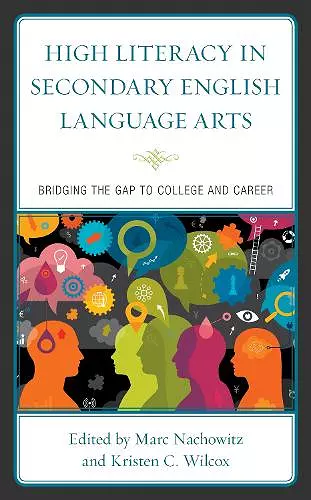High Literacy in Secondary English Language Arts
Bridging the Gap to College and Career
Kristen C Wilcox editor Marc Nachowitz editor
Format:Hardback
Publisher:Lexington Books
Published:7th Nov '18
Currently unavailable, and unfortunately no date known when it will be back

This volume culls scholarship on both what high literacy is and how it is developed. It embraces the call put forth by Langer and Applebee (2016) that high literacy must continue to be our aim and to see more research analyzing and identifying how teachers might promote literacy practices that promote deep thinking around important content. The editors offer a conceptual framework for high literacy that explicates how each component (i.e. reading, writing, dialogic engagement, and epistemic cognition in literary reasoning) relates to the others and from what scholarly literature these concepts have been derived. Individual chapter authors provide in-depth examinations of the existing research base on particular related topics, focusing on the two important cross-cutting aims of the volume: (1) explicating the roles reading, writing, dialogic engagement, and epistemic cognition hold in high literacy development, and (2) providing examples of practices recommended to develop high literacy.
Literacy is not a unitary skill, but one that involves using language and reasoning strategically for many different purposes in different situations and communities. It is essential that students in secondary schools become adept at doing so. This edited volume makes a clear and cogent case for why this is so critical and, even more importantly, provides useful and powerful examples of how to make “high literacy” a reality. -- Steve Graham, Warner Professor of Educational Leadership & Innovation, Arizona State University
All of the authors share a concern for how high literacy can serve as a blueprint for engineering English language arts pedagogy that is more rigorous, inclusive, and relevant than what most secondary students encounter today. The chapters offer well-theorized and classroom-tested ideas about how to achieve that goal, and the editors frame that work with an optimism that is both clear-eyed and inviting. -- Kelly Chandler-Olcott, Laura J. & L. Douglas Meredith Professor of Teaching Excellence, Syracuse University
This edited book addresses the conceptualization and implementation of high literacy practices in ways that inform a variety of important stakeholders (e.g., policy-makers, practitioners, researchers, teacher educators). Using numerous examples based on literacy research from secondary English Language Arts classrooms, the authors share instructional practices for all components of high literacy development. In doing so, readers not only learn about individual components (i.e., reading, writing, dialogic engagement, and epistemic cognition in literacy reasoning) but also how these components relate to each other for the overall conceptual framework. -- Virginia J. Goatley, University at Albany, State University of New York
ISBN: 9781498570756
Dimensions: 239mm x 159mm x 23mm
Weight: 599g
260 pages